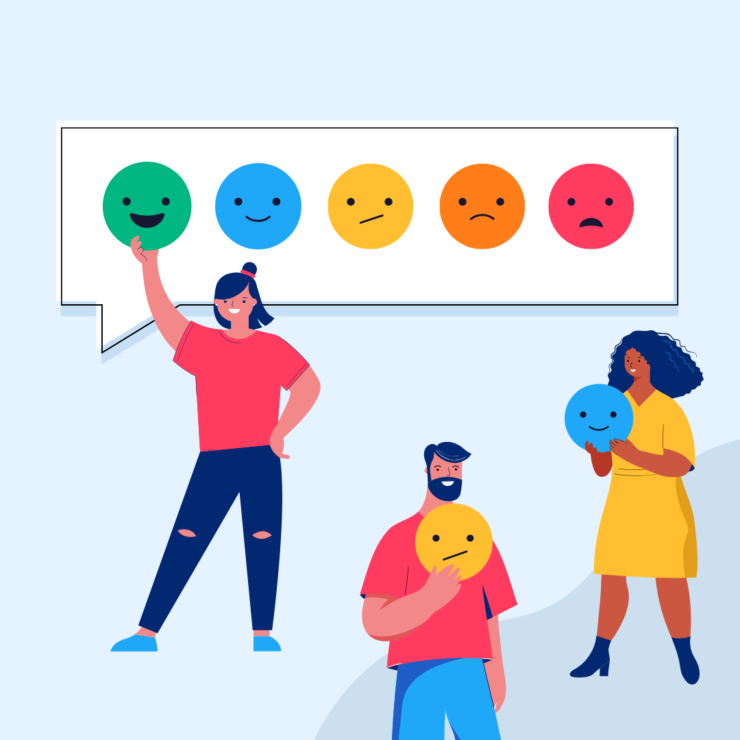You’ve come to the right place to better target your potential customers, use your marketing resources and time in the right places and for the right people, and avoid spending your advertising budget on non-converting individuals. Today, we will share with you the most crucial tips prepared by our digital marketing experts, tried and verified.
What is Audience Targeting?
Audience targeting is a method of segmenting consumers based on their interests or demographic data. Marketing experts use audience targeting to create campaigns directly aligned with consumers’ lifestyles.
Demographic information to consider includes age, average income, interests, location, and gender. Another valuable data is psychographic, which shows the values and motivations influencing the consumer’s journey.
When segmenting your target audience, think about the type of audience you want to reach for a specific campaign or product and which demographic characteristics you should focus on. Naturally, you might turn to your existing customers first. However, keep in mind that the audience you target for each campaign or product may not always be the same as your existing customers.
How Does Audience Targeting Work?
When it comes to marketing and advertising campaigns, knowing who is engaging with your marketing content at any given moment is crucial for delivering relevant advertisements. The way to achieve this is through tools that allow you to create customer profiles to understand who your customers are.
Once you have all the data, the next step is audience targeting. Audience targeting is about activation, taking specific segments of the target audience and acting according to their characteristics. Below, we will take a closer look at these steps…
What is the Process of Achieving Effective Targeting?
Firstly, start with a group of customers. Use your Data Management Platform (DMP) or Customer Relationship Management (CRM) system to segment them into audience segments. Publish relevant ads or deliver content to users within your target audience segment.
Next, you can assess how your ads or content are performing within the targeted audience segment or how metrics align with your KPIs and business objectives. Regardless of your KPIs, are the results leading to a conversion, more time spent on the page, or page views? If you notice that the modeling isn’t working as desired, you can further segment your content or target audience and try again. After that, think about how you can use this insight to inform your next activation strategy. Who knows! Maybe your strategy will be to offer them a different product.
Now that you have a bit more knowledge about audience targeting, let’s take a look at a few tips to keep in mind.
Audience Targeting Tips
1. Look into your analytics to gain more insights about your target audience.
Did you know that Google Analytics has a section that allows you to know the interests of your website visitors? This section categorizes what your users are interested in. For instance, it can tell you if your audience consists of travel enthusiasts, food lovers, or music enthusiasts.
After examining your analytics, you can tailor your content to a specific demographic. For example, if you notice that the majority of your core website visitors are music lovers, can you incorporate the concept of music into some of your marketing materials, even if your product or service is unrelated? Alternatively, should you try placing ads on platforms like Spotify or Apple Music?
Of course, keeping the goal of your campaign in mind is equally important. If you are aiming to increase brand awareness, you might want to create content that appeals to a broader range of interests and consider limiting the number of hyper-targeted groups.
2. How do you create a target audience?
Target audiences are made up of individual customers, and the more you know about your customers, the more specific you can be when creating target audiences. The best place to start is with customer profiles. You may be working with a Data Management Platform (DMP), CRM, or Customer Data Platform (CDP) to manage these profiles. To enhance these profiles, you can bring in additional data from your analytics solution, such as customer journey data and purchasing behaviors. Additionally, you can buy or sell second and third-party data through a marketplace to further refine customer profiles.
However, each customer should have a single identity so that you can identify them across devices and data sources; otherwise, they may appear as two or more different customers or visitors when they are actually the same person. A visitor ID that is a known identity for your company can be assigned to that user. You can use device identities, such as advertising identifiers like IDFA or Android ID. You can also use cookies, but you should use first-party cookies to avoid browser limitations and ensure your customers opt-in.
3. Engage with focus groups to explore.
If you find yourself lost in the chaos of big data when it comes to targeting the interests of your audience, and all this research doesn’t seem to be working, it’s time to interact with your customers. One way to understand how to market to the individuals you’re targeting is to ask them directly! Reaching out to your target audience through an Instagram poll or a marketing email makes your customer feel empowered.
4. Create valuable content that appeals to your target audience on social media.
Your content should be something that your target audience can use. If you notice that your audience engages well with specific types of content, be sure to incorporate that into your content calendar.
For example, if you find that Instagram is where you have the most engagement, make it the primary focus of your marketing efforts. Also, posts about discounts, upcoming launches, and resharing positive reviews can be valuable content for your target audience.
5. Conduct A/B testing to ensure effectiveness in your targeting.
A/B testing is a highly useful test that you should add to your marketing techniques arsenal. A/B testing is an experiment that divides your target audience into two groups, A and B; these individuals will participate in a test run of your content and provide valuable feedback that can help you refine your marketing content before officially publishing it.
For example, if you have two variations of a tweet for your product launch and want to know which tweet will perform better, you can create an A/B test to help you make the choice.
6. Publish a creative ad and experiment, but personalize it for various audiences.
One of the most effective ways to diversify your content is to publish personalized ads. If you have a rather generic ad, consider how you can slightly modify it for various audiences. This method is the easiest way to make your target audience feel specifically targeted.
What are some challenges you might face when targeting audiences?
· One common challenge is targeting a very broad audience. If your reach is too broad, like targeting people aged 18-49, you can increase your reach by targeting a smaller user base with a higher likelihood of conversion.
· Another challenge is bombarding your target audience with too many ads. You should diversify ad content based on the segments of your target audience. Look at data across all different touchpoints before, during, or after purchase, and find the right frequency for your ads.
· You may lack the tools or resources needed to accurately understand and target your customer segments. You should have a database that can consolidate data from various sources to create unified customer profiles.
· Finally, you need real-time updates of customer data to always know where your customers are in the sales cycle and to be able to segment them correctly at any given time. Since a customer can enter different categories at different times, you need to track where your customers stand and what changes in their lives might affect your targeting strategy.
Building customer profiles and audience segments takes time. To manage this easily and effectively, you need to track and report your customer data in real-time. Next-gen CRMs allow you to track and segment customer data in real-time, integrate it with your marketing tools, and enable you to conduct accurate and efficient marketing campaigns.




